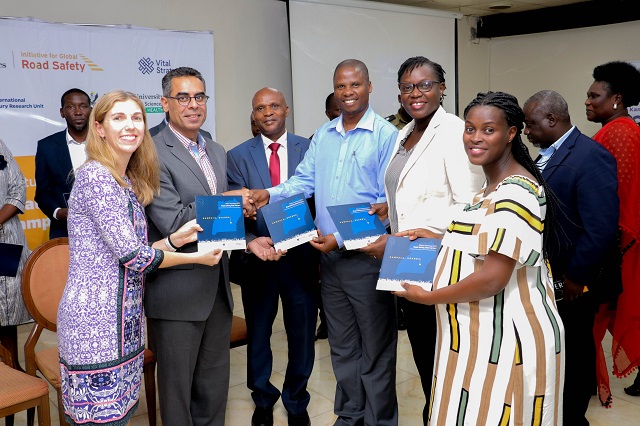
Kampala, Uganda | THE INDEPENDENT | Findings of a new study on the status of road safety in Kampala have found that only a few Boda Boda riders and almost none of the passengers are using helmets despite awareness about their protectiveness.
Sharing the findings on Tuesday, Bonny Balugaba a Researcher based at Makerere University School of Public Health said they had been collecting data on helmet use and speed in Kampala from 2021 and found that only 39% of the riders are using helmets.
Worse, they found that even among those who use helmets, the majority do it all wrong yet scientific evidence shows using helmets correctly can reduce the risk of fatality by 42% and risk of head injury by 69% in case of a crash.
While some people quote trivial reasons such as fear of messing up their hair for not wearing helmets, Balugaba says there is a need to review the helmets on the market as some are not fit for Uganda’s weather and too uncomfortable for riders to consistently use.
Apart from helmet use, researchers also assessed speed and found that speeding was highest and beyond the recommended speed limits for urbanized areas among drivers of SUV cars. These were followed by Saloon cars. The average speed among vehicles was high at 57km/hr and yet the global recommendation is 30km/hr for local and collector roads. 50km/hr is the recommended speed for arterial roads however in this study, 60% of the observed vehicles were traveling at unsafe speeds for both road types.
Traffic Police Spokesperson Micheal Kananura acknowledged the challenge but said they are too understaffed to fully man the roads for speed. He said most of their Kampala staff are deployed in traffic management.
Meanwhile, researchers conducted six observation rounds where speed and helmet use were observed in over 500,000 and 600,000 instances respectively.
According to Dr. Fredrick Oporia who heads Makerere’s Trauma, Injury and Disability (TRAID) coming up with such high-quality data on the risk factors and sharing it with stakeholders such as the police and political leaders will help improve safety on the road especially when they use this data to formulate policies that specifically solve the risk factors.
However, researchers attending the meeting agreed that proper road use and appreciating things like wearing helmets is a behavioral issue that mass media campaigns in addition to enforcement can go a long way in helping change behavior.
 The Independent Uganda: You get the Truth we Pay the Price
The Independent Uganda: You get the Truth we Pay the Price


